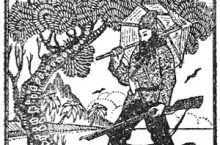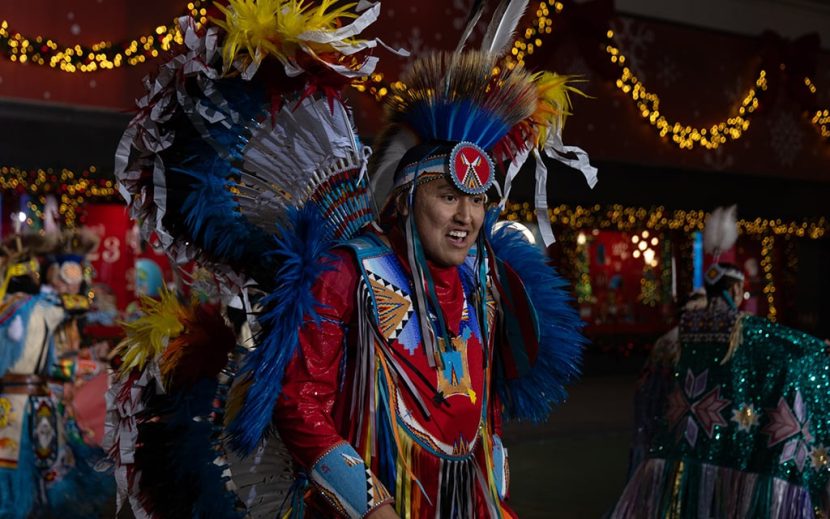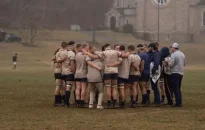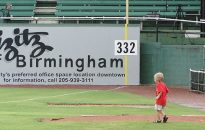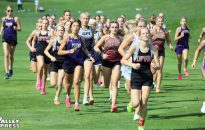A rendering shows the interior of the fieldhouse at the Mosaic Quarter, featuring basketball courts that also can be used for volleyball and other sports. (Photo courtesy of Mosaic Quarter) A rendering of the 3,000-seat arena designed for the University of Arizona men’s and women’s hockey teams. (Photo courtesy of Mosaic Quarter) A rendering displays […]


A rendering shows the interior of the fieldhouse at the Mosaic Quarter, featuring basketball courts that also can be used for volleyball and other sports. (Photo courtesy of Mosaic Quarter)

A rendering of the 3,000-seat arena designed for the University of Arizona men’s and women’s hockey teams. (Photo courtesy of Mosaic Quarter)

A rendering displays the main entrance to the iceplex at the Mosaic Quarter, as envisioned by the development team. (Photo courtesy of Mosaic Quarter)
TUCSON – Soon Tucsonans won’t have to make the trip to Phoenix to fulfill their ice skating and hockey needs.
Tucson’s newest sports and recreational complex is under construction after the recent official groundbreaking ceremony on Nov. 20, with Tucson mayor Regina Romero and the University of Arizona athletic director Desireé Reed-Francois in attendance.
The Mosaic Quarter, a multi-million dollar project, promises three ice rinks and a field house for basketball, volleyball, pickleball and football in its first phase, which is expected to be completed by 2027. The facility will also have a commercial space that can accommodate up to four restaurants and a solar farm to help power the facility, according to the project’s executive summary.
The recreational multi-sport and hospitality complex is being developed on the south side of Interstate 10, directly across from the Pima County-owned Kino Sports Complex, which consists of baseball fields, soccer fields and Kino Veterans Memorial Stadium.
“There are no public dollars, no public incentives, no tax breaks (and) no sweetheart deals,” said Francis Knott Jr., senior managing director of Mosaic Quarter Development. “It is fully financed by our firm and our investors.”
A major concern of building a facility with ice rinks in the Sonoran Desert is the amount of water usage required for upkeep.

Francis Knott Jr., right, and Lindsay Knott, middle, are pictured following the groundbreaking ceremony at the construction site of the Mosaic Quarter on Nov. 20. (Photo by Tom Forbes/Cronkite News)
“We collect 100% of the stormwater that will be generated by the site and filter it in order to make ice at the iceplex,” Knott said. “So every time you see a Zamboni resurfacing the ice, it’s using stormwater or reclaimed water from the city and the county to do that.”
Pima County owns the land where the Mosaic Quarter is being developed. Knott says the land lease contract is $27 million for 40 years, which is $675,000 per year. Additionally, the county will collect 55% of the revenue, according to the project summary.
Currently, the only ice rink in Tucson is a removable rink at the Tucson Convention Center. The Tucson Roadrunners professional hockey team, University of Arizona men’s and women’s hockey teams and recreational adult and junior hockey leagues share the facility. The convention center also hosts events like Disney On Ice, concerts, other non-ice sporting events and annual gem and mineral shows.
As demand for hockey rises, one ice rink presents scheduling and logistical issues for everyone involved.
The Tucson Adult Hockey League, for example, fields over 300 players across 23 teams and has a waiting list with more players on standby. Danny Plattner, the league’s co-founder, projects to double the number of teams in the first year that the ice complex opens.
“There’s always been a strong demand,” Plattner said. “We try to add teams, but we have to be reasonable as far as the limited amount of ice time that we have.
“2027 can’t come sooner and soon enough.”
Having only one ice rink with limited availability for consistent use isn’t enough to foster a thriving community of young skaters and hockey players. The constraints of shared ice time and overcrowded schedules make it difficult for aspiring athletes to gain regular access to the rink, stifling skill development and enthusiasm for the sport.

City leaders and the Knott development team gathered for the groundbreaking ceremony of the Mosaic Quarter. (Photo by Tom Forbes/Cronkite News)
“Having standalone facilities that’s dedicated (to) the public is just going to be enormous for opportunities in the game and skating,” said Dave Honecker, president of the Tucson Junior Roadrunners. “I imagine, with a full ice rink, we’re going to have a lot more kids involved and learn to skate at a much younger age than we currently have.
The University of Arizona men’s and women’s club hockey teams are the anticipated anchor tenants of the new complex and will host games at the proposed 3,000-seat arena.
“This is going to have a huge impact,” Reed-Francois said. “Not just the women’s hockey team and the men’s hockey team, but all those young people who now get to play hockey here in Tucson.”
For men’s coach Chad Berman, the new iceplex is a major upgrade. Not having a practice facility also puts the club at a disadvantage to competing teams because Berman said it delays the timeline of when injured players can see if they’re healthy enough to come back to the team.
“We played three or four games this season with zero practice on the week,” Berman said. “Sorry, that’s just not realistic.”
The facility’s groundbreaking event came after MLB announced Tucson will host the 2025 World Baseball Classic qualifiers in early March at Kino Stadium. The city was scheduled to host the same event in 2020 before the COVID-19 pandemic.
Edgar Soto, vice president of Pima Community College’s Desert Vista campus and a long-time advocate for local sports in Tucson, is pleased to see more sporting facilities constructed and large events returning to the city.

The groundbreaking ceremony of the Mosaic Quarter took place in a festive atmosphere under a large tent, with free breakfast provided by a local Mexican restaurant and a live mariachi band. (Photo by Tom Forbes/Cronkite News)
“There’s so many opportunities here. When we lost spring training, we all felt the loss there, and we’ve been searching for something to fill that gap,” Soto said. “Tucson is a sports town.”
Another goal of the Mosaic Quarter is to host tournaments and invite teams from all over the country and world to compete in Tucson. The tournaments will benefit the local economy through a “hotel bed tax,” in addition to other taxes and the revenue shared by the Mosaic Quarter. Visit Tucson, a non-profit marketing organization aimed at attracting businesses and travelers, is partly supported by this hotel bed tax to promote tourism in the city.
“Our goal is to fill hotels,” said Nick Pazzi, director of sports for Visit Tucson. “The new field house with the basketball courts that can be converted into volleyball courts. That’ll allow us an opportunity to bring even more events to the community in the summertime.”
The Pima County Board of Supervisors approved a new hospitality and promotional agreement on Dec. 3. This new agreement will “provide up to $80,000 annually over three Major League Soccer preseasons to reimburse hotel costs for teams booking hotel rooms in unincorporated Pima County,” according to a written statement by Pima County.
The Mosaic Quarter multi-sporting and recreational facility, paired alongside Kino Sports Complex, is set to become a hub for sporting and recreation that competes with Maricopa County.
And the hope is to bring back the sports culture to a city with a rich history.
“Championship teams have three things in common,” Reed said. “They have great talent, they have great leadership, and they have incredible connectivity.”





